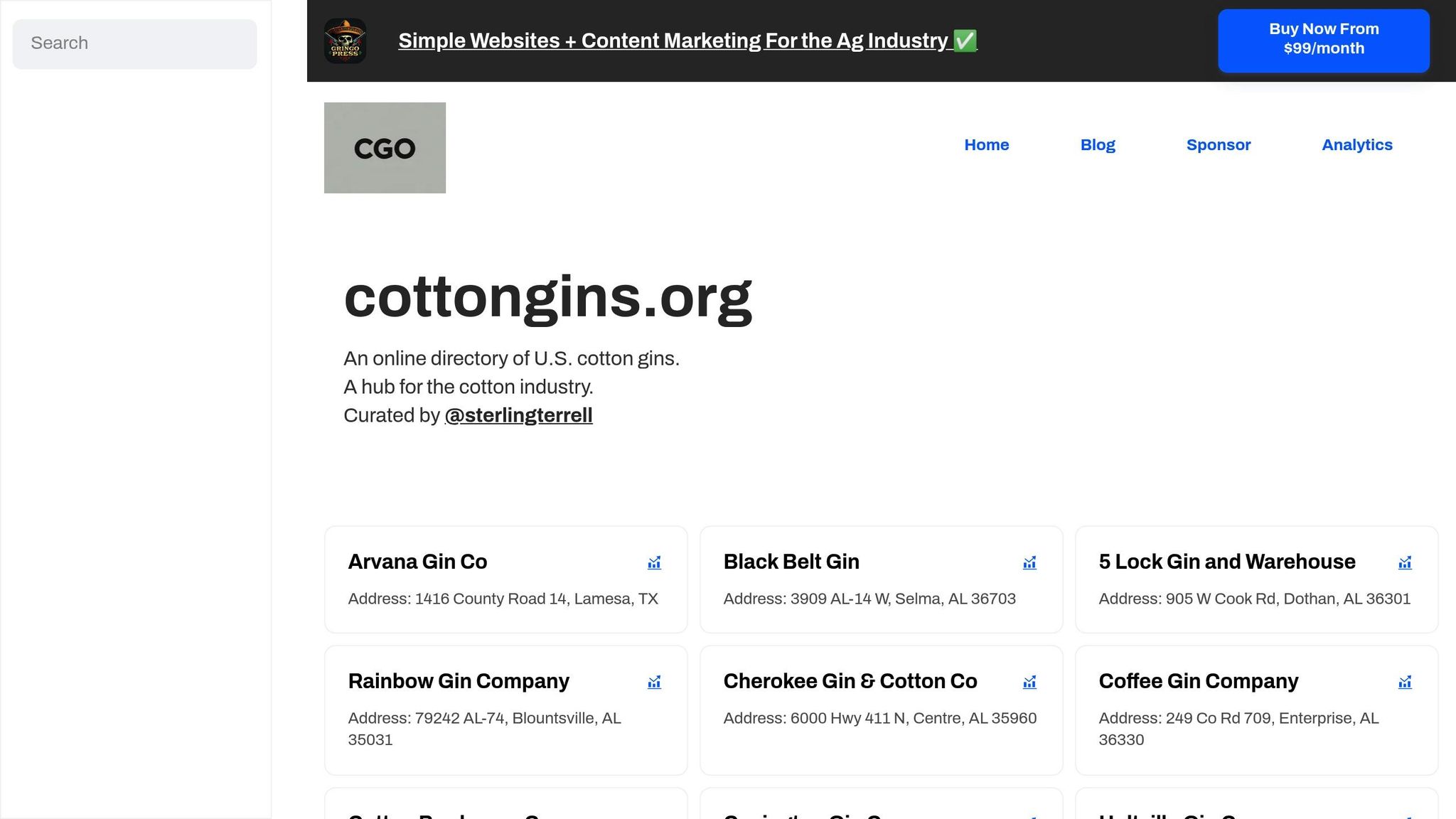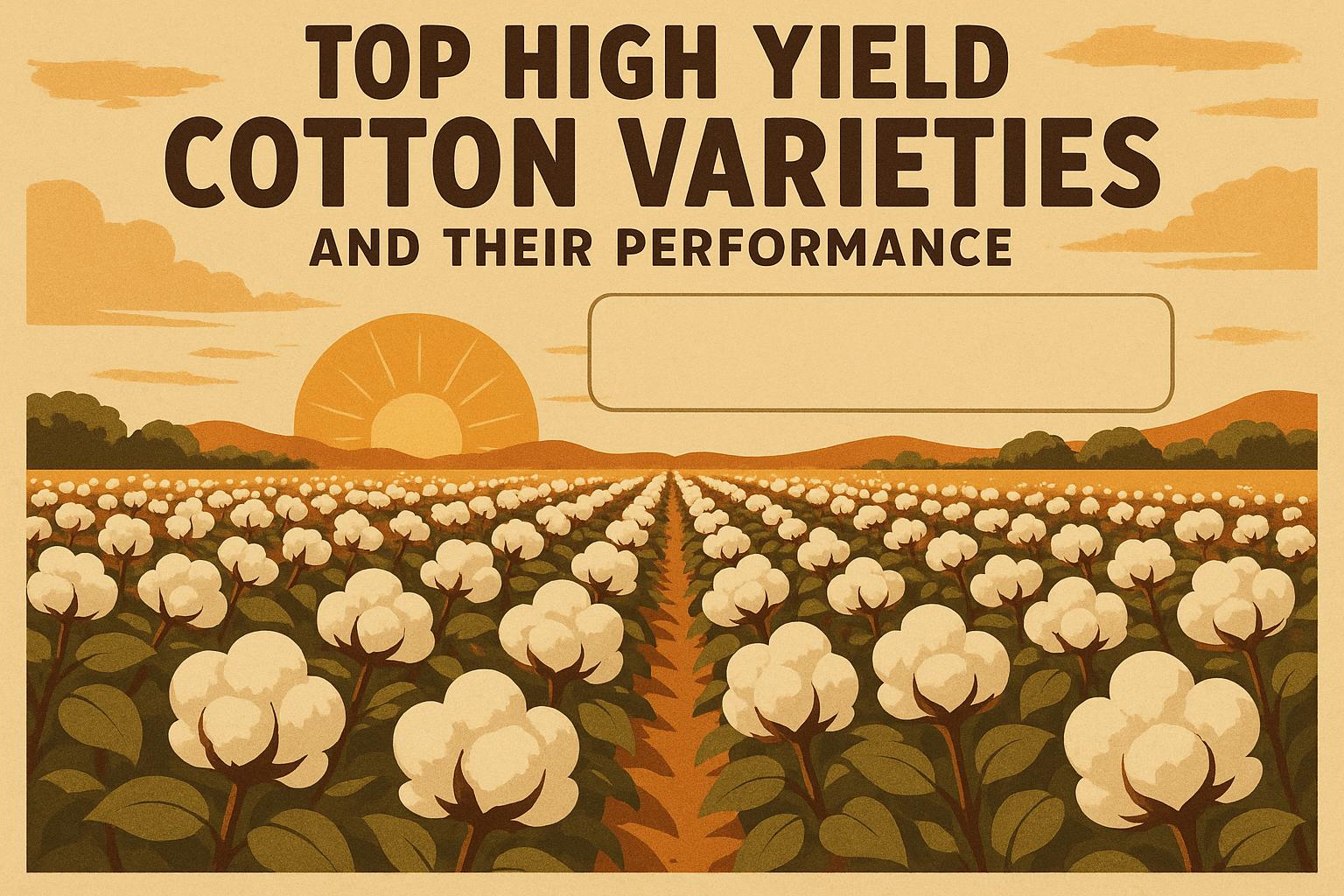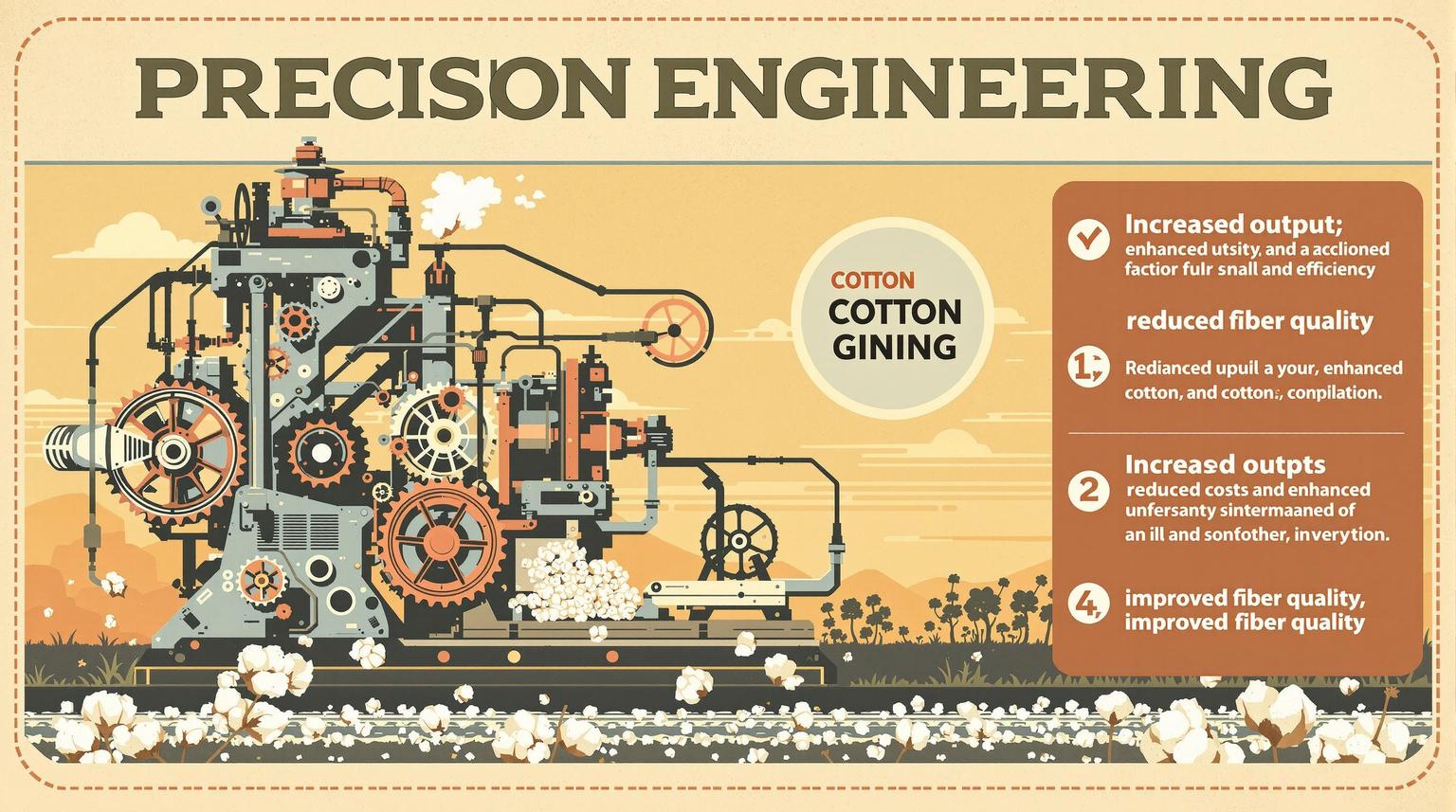Sanitary compliance in the cotton trade is all about meeting health and safety standards to protect humans, animals, and plants. This ensures cotton products are safe, pest-free, and meet both U.S. and international trade requirements. Here's what you need to know:
- What It Covers: From pest control to chemical safety, sanitary compliance involves strict measures throughout the cotton supply chain.
- Why It Matters: It prevents crop losses, ensures market access, and builds trust with consumers and trade partners.
- Key Frameworks: The WTO’s SPS Agreement and the International Plant Protection Convention (IPPC) guide global standards, while U.S. agencies like USDA, FDA, and EPA enforce domestic rules.
- Steps to Compliance: Pre-shipment inspections, pest control, and detailed documentation are essential. Tools like the Phytosanitary Certificate Issuance and Tracking System (PCIT) simplify processes.
- Challenges Ahead: Stricter chemical regulations, such as PFAS bans in U.S. states like California and Colorado, require constant vigilance and adaptation.
Compliance isn't just about meeting legal standards - it keeps cotton trade safe, efficient, and competitive in global markets.
Navigating UK Import Requirements for Textiles & Apparel: Labelling, Safety, and Customs Compliance
International Sanitary Standards and Regulations
For cotton traders navigating global markets, understanding the regulatory framework is non-negotiable. International standards are in place to balance health protections with the smooth flow of trade. Knowing these rules not only ensures compliance but also simplifies operations.
Global Regulatory Frameworks
At the heart of international cotton trade regulations lies the World Trade Organization’s Agreement on the Application of Sanitary and Phytosanitary Measures (SPS Agreement). This agreement outlines how 132 WTO member nations handle health and safety standards in trade. As stated in the SPS Agreement:
The basic aim of the SPS Agreement is to maintain the sovereign right of any government to provide the level of health protection it deems appropriate, but to ensure that these sovereign rights are not misused for protectionist purposes and do not result in unnecessary barriers to international trade.
Countries within the SPS framework can set their own health standards, but these must be grounded in science and should not exceed what’s necessary to protect human, animal, or plant health. While aligning with international standards is encouraged, stricter measures may be implemented if backed by scientific evidence - provided they do not create excessive trade restrictions.
The International Plant Protection Convention (IPPC) complements the SPS Agreement by focusing on plant health. With 184 member nations, the IPPC establishes International Standards for Phytosanitary Measures (ISPMs), which serve as technical guidelines for plant health regulations. The IPPC also supports the certification of exports to prevent the spread of pests, creating a common ground for compliance across borders.
Transparency is a cornerstone of the SPS Agreement. Member nations are required to inform trade partners about updates to sanitary and phytosanitary measures and provide access to information through designated enquiry points. This openness allows cotton traders to stay ahead of regulatory changes and adapt their compliance strategies. These global standards often shape domestic policies, including those in the U.S.
U.S. Regulatory Bodies and Standards
In the U.S., multiple agencies oversee the rules governing cotton trade. The Federal Trade Commission (FTC) enforces labeling requirements under the Textile Fiber Products Identification Act, ensuring that product labels disclose fiber content accurately. Meanwhile, the Consumer Product Safety Commission (CPSC) oversees flammability standards for textiles under the Flammable Fabrics Act. Cotton products like clothing, carpets, and children’s sleepwear must meet strict safety criteria.
For organic cotton, certification through the U.S. Department of Agriculture (USDA) is essential to confirm compliance with national organic standards. Additionally, the Toxic Substances Control Act (TSCA) regulates the use of certain chemicals, including PFAS and PBTs, in textile manufacturing. State-level laws add another layer of complexity. For instance, California’s AB 1817 bans the sale of new textile products containing intentionally added PFAS above 100 parts per million (ppm) starting January 1, 2025. This threshold drops to 50 ppm by 2027, with exceptions for clothing intended for extreme wet conditions until 2028. Similarly, Colorado’s S.B.24-081 mandates disclosure for outdoor gear designed for severe wet conditions and bans PFAS in indoor textile furnishings by 2025, with additional restrictions to follow.
These shifts toward stricter chemical regulations demand vigilance. Manufacturers and importers should prioritize regular testing and maintain thorough documentation to comply with labeling, flammability, and chemical standards.
As science evolves and consumer demands grow, the regulatory landscape will continue to change. By staying informed and building strong compliance systems, cotton traders can maintain market access and stay competitive in an increasingly regulated industry.
Cotton Trade Sanitary Compliance Requirements
Ensuring sanitary compliance in the cotton trade means meeting both U.S. and international standards. These measures protect against pest infestations, maintain quality, and support smooth international trade.
Pre-shipment Inspections and Certifications
Phytosanitary certificates confirm that cotton shipments are free from pests and diseases, a critical requirement for export compliance. To start, exporters must submit PPQ Form 572, followed by PPQ Form 577, and complete the National Cotton Compliance Agreement (NCCA) online, as outlined by USDA APHIS guidelines.
The Phytosanitary Certificate Issuance and Tracking System (PCIT) simplifies this process by offering electronic certification options, streamlining compliance with USDA APHIS protocols. For re-exporting foreign-origin cotton from the U.S., a phytosanitary certificate for re-export is also necessary. This ensures the shipment meets the importing country's regulations and remains pest-free during storage in the U.S.. Early application and consultation with your state’s export certification specialist can help navigate specific requirements.
These steps are essential for clearing initial compliance hurdles before shipments proceed to in-transit controls.
Sanitation and Pest Control Measures
Cotton crops face threats from pests like boll weevils and pink bollworms, making strict control measures necessary. Volunteer and noncommercial cotton must be managed carefully to eliminate pest hosts. State agricultural departments, such as the Texas Department of Agriculture, enforce these measures by establishing regulated zones, mandating the destruction of host plants, and inspecting fields or storage facilities. Regulated planting dates help synchronize pest control efforts, with organizations like the Texas Boll Weevil Eradication Foundation leading eradication programs.
Quarantine measures protect non-infested areas by limiting the movement of materials prone to pest infestations. For example, ginners may need to disinfect cottonseed when processing cotton from regulated zones. Integrated pest management techniques - such as inspection, quarantine, fumigation, and the destruction of infested plants - work together to suppress and eliminate pest populations. These efforts ensure that cotton remains free from contamination.
Implementing these measures lays a strong foundation for detailed documentation and traceability across the supply chain.
Documentation and Traceability
After inspections and pest control measures, thorough documentation ensures compliance throughout the cotton supply chain. From cultivation to manufacturing and delivery, traceability confirms adherence to processing, transportation, and production standards. Supply chain mapping plays a key role in identifying risks and maintaining due diligence at every step. U.S. Customs and Border Protection advises keeping records to establish a complete chain of custody for all suppliers.
Transaction certificates verify each transfer of ownership as cotton moves through the supply chain, while regular reviews help maintain record accuracy. Advanced traceability methods include:
| Traceability Method | Description |
|---|---|
| Taggant | Adding physical or chemical markers to cotton fibers |
| Forensic | Using scientific techniques to verify cotton’s origin |
| Chain of Custody | Tracking and documenting movements across the supply chain |
DNA-based tagging is an advanced tool for securing the supply chain and preventing counterfeiting. Certification processes further ensure that cotton meets environmental and social standards, fostering transparency. The Third-Party Verification Chain of Custody (3PV CoC) Certification supports traceability, confirming that finished products use cotton grown under sustainable practices.
In early 2024, 26 brands sourcing from Maral Overseas and Pratibha Syntex collaborated with the Fair Labor Association (FLA) to create a remediation roadmap addressing labor concerns and improving traceability. By September 2024, the "Harvesting the Future (HTF) – Cotton in India" project was launched, targeting 32 villages in Khargone and Barwani districts, involving over 7,500 cotton farmers. This three-year initiative integrates human rights due diligence, community-level actions, and supply chain mapping, with activities set to begin in 2025. Regular audits ensure that records accurately reflect the cotton's journey and that all regulatory standards are consistently upheld.
sbb-itb-0e617ca
Cotton Supply Chain Compliance Best Practices
Creating a solid compliance framework in the cotton supply chain requires careful planning and consistent execution at every level. Companies that prioritize thorough compliance systems not only reduce risks but also ensure they align with regulatory requirements.
Setting Up Traceability Systems
Modern traceability systems, especially those leveraging digital platforms and blockchain, can significantly reduce risks - by as much as 50% - while simplifying data management and meeting consumer expectations for transparency. The first step? Mapping the entire supply chain to standardize data collection across all stages.
Advanced tracking tools, like barcodes or RFID tags, play a key role in this process. These systems work best when integrated into a centralized platform, offering real-time visibility to all stakeholders. And here's a compelling stat: 71% of consumers are willing to spend more on brands that provide full transparency and traceability.
"Traceability plays a foundational role in validating circularity claims and preparing for regulations like the EU Digital Product Passport." - Orsolya Janossy, Senior Sustainability Manager at Recover™
Once a reliable traceability system is in place, ongoing staff training and expert input ensure that compliance remains strong across the supply chain.
Staff Training and Regulatory Updates
Even with advanced technology, a well-informed workforce is critical for maintaining compliance. Regular training programs help employees navigate complex regulations and integrate compliance into their daily tasks. This proactive approach not only minimizes legal risks but also fosters a workplace culture of accountability and integrity. In fact, companies focused on supply chain transparency are 60% more likely to meet regulatory standards and avoid penalties. A great example is the U.S. Cotton Trust Protocol, which requires members to re-enroll annually to confirm adherence to federal and state laws.
Training goes beyond reducing risks - it equips employees to identify and report potential compliance issues early. It also ensures they stay current with evolving standards, which is especially important in agriculture, a field with workplace fatality rates often double those of other sectors.
Effective training programs should emphasize practical application. Employees need to understand how regulatory changes affect their specific roles, and regular updates ensure they’re prepared for shifts in both domestic and international requirements impacting cotton trade.
Working with Compliance Experts
Sometimes, internal teams need additional expertise to navigate the complexities of global regulations. Partnering with customs brokers and compliance specialists provides access to the knowledge required to meet legal standards, maintain quality, and mitigate risks. These experts play a vital role in promoting sustainable and responsible business practices.
External advisors can also help companies streamline compliance efforts in cost-effective ways. Their guidance ensures that international trade requirements, which often vary significantly between countries, are systematically addressed.
"Fashion businesses need verifiable evidence of ESG-compliant supply chains stretching far beyond Tier 1 suppliers - their closest trading partners." - Forbes Technology Council
Companies with strong ESG data governance and interdepartmental collaboration are nearly twice as likely to feel prepared for regulatory disclosures. Compliance experts can help establish this readiness by implementing supplier qualification processes, conducting audits, and using performance scorecards to track supplier performance. These practices not only maintain market access but also ensure adherence to both international and U.S. sanitary compliance standards.
Partnerships with compliance specialists should be ongoing, not one-time engagements. Regular audits, whether conducted internally or by third-party auditors, verify continued compliance. Additionally, training sessions led by these experts can cover critical areas like ethical standards, legal requirements, and company policies. This expert-led approach ensures thorough understanding and credibility, helping companies address even the most intricate regulatory challenges effectively.
Using cottongins.org for Compliance and Industry Resources

Having accurate location data for cotton gins is essential when it comes to meeting sanitary standards. cottongins.org provides a detailed directory of cotton gins across the U.S., organized by county and state. This resource not only helps companies verify facility locations for compliance but also opens doors to broader industry connections.
Directory of U.S. Cotton Gins
The directory on cottongins.org is a valuable tool for identifying and assessing cotton processing facilities. With detailed address listings, businesses can ensure their processing partners meet the necessary sanitary requirements, supporting due diligence efforts.
Sponsorship and Submission Opportunities
In addition to the directory, cottongins.org offers opportunities to collaborate and engage within the industry through sponsorship programs. These options help businesses expand their network and access compliance-focused resources. Sponsorship levels include:
- Sponsored Post – $200 per post: Share content such as regulatory updates, compliance tips, or best practices. These posts are prominently displayed for one day and promoted on social media for maximum visibility.
- Official Sponsor – $200 per month: Enjoy logo placement with a backlink on the main page footer, plus a complimentary Sponsored Post with an annual commitment.
- Featured Sponsor – $400 per month: Get premium logo placement with a backlink, along with two free Sponsored Posts each year.
The platform also features a submission form for adding new cotton gin entries, ensuring the directory remains accurate and up to date. These features make cottongins.org a hub for connecting cotton businesses with compliance-minded industry partners, all while promoting stronger and more reliable supply chains.
Cotton Trade Sanitary Compliance Summary
This section pulls together key points about compliance in the cotton trade, highlighting how effective systems ensure smooth operations and align with evolving regulations. The frameworks discussed earlier are designed to adapt and remain reliable as standards change.
Blending third-party certifications with ongoing monitoring strikes a balance between maintaining credibility and managing growth effectively.
Adhering to compliance standards isn't just about avoiding risks - it’s also a financial necessity. For example, processed raw cotton products generated over $18 billion in revenue in 2021 and are expected to surpass $22 billion by 2027. On the flip side, ignoring compliance can be costly, especially considering that conventional cotton farming accounts for nearly 25% of global insecticide usage.
Transparency and traceability play a critical role in verifying the origins, production conditions, and environmental impact of cotton products. Certification programs like OEKO-TEX® Label Check help uphold these standards.
Regulations are constantly evolving. For instance, OEKO-TEX® updates its standards annually, and starting April 1, 2025, claims such as "GMO-free" or "organic" will no longer be part of STANDARD 100 certification. Instead, organic certifications will shift to OEKO-TEX® ORGANIC COTTON, a move aimed at reducing fraud.
Many companies are taking proactive steps toward improvement. Initiatives like the ZDHC Supplier to Zero Programme are helping businesses enhance sustainability practices.
Clear communication and a commitment to transparency foster trust among customers, regulators, and partners. This makes compliance not just a requirement but also a strategic advantage.
Finally, the integration of digital technologies with scientific risk assessments is strengthening compliance systems. These tools simplify processes like shipping while ensuring all standards are met, reinforcing the robust frameworks outlined earlier.
FAQs
What challenges do cotton traders face in meeting sanitary compliance with changing chemical regulations?
Cotton traders encounter a range of hurdles when it comes to meeting sanitary compliance, especially as chemical regulations keep shifting. They need to keep pace with updated safety and environmental standards, address risks tied to chemical exposure, and ensure they comply with restrictions on hazardous substances.
Navigating these changes isn’t straightforward. Falling short on compliance can lead to supply chain disruptions, higher operational expenses, and strained trade relationships. On top of that, traders must juggle these regulatory demands while preserving the quality of their products and maintaining efficient processes.
How do global frameworks like the WTO’s SPS Agreement and the IPPC shape U.S. sanitary standards in the cotton trade?
Global frameworks like the WTO’s SPS Agreement and the IPPC are key players in shaping how the U.S. manages sanitary standards in the cotton trade. These frameworks provide science-based guidelines and set international benchmarks to ensure goods move safely across borders.
By encouraging transparency and standardizing practices, these frameworks help the U.S. align its domestic regulations with global expectations. At the same time, they allow room to address specific national priorities, ensuring the cotton trade remains both safe and efficient on local and international levels.
How does technology like the Phytosanitary Certificate Issuance and Tracking System (PCIT) streamline compliance for cotton exporters?
Technology, like the Phytosanitary Certificate Issuance and Tracking System (PCIT), has become essential for streamlining compliance for cotton exporters. By automating the creation and monitoring of phytosanitary certificates, PCIT ensures processes are accurate, efficient, and aligned with international plant health standards.
This system cuts down on paperwork, reduces mistakes, and offers real-time updates, simplifying the task of meeting regulatory requirements. Tools like PCIT not only save time but also allow cotton exporters to concentrate on growing their presence in global markets.


